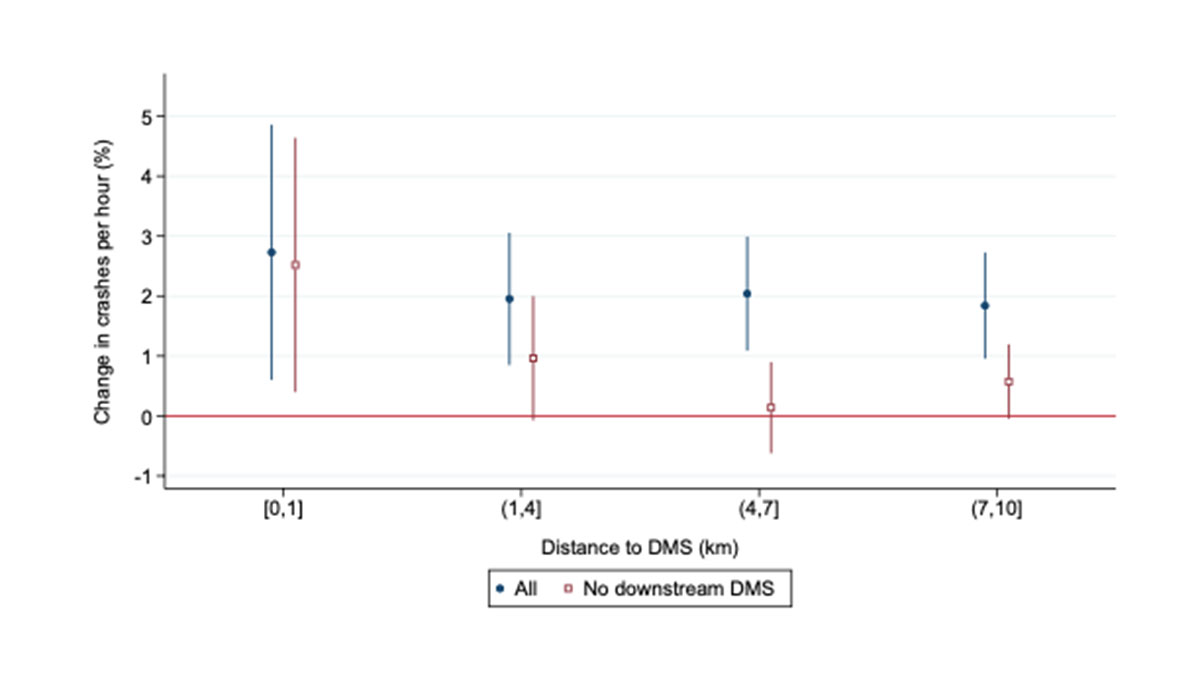You are driving down the highway and you see this message on a roadside billboard: “1,669 deaths this year on Texas roads.” Do you slow down? Or do you get distracted?
These types of messages, often displayed on dynamic message signs (DMS), are used by 19 states to change drivers’ behaviors. However, it is possible that these types of messages emotionally overwhelm drivers, and crowd out the attention needed for safe driving.
Jonathan Hall and Joshua Madsen conducted a study to determine how messages that display number of deaths or accidents affect the number of car crashes. They used accident data from 2010 to 2017 from Texas. The Texas Department of Transportation had a campaign that displayed fatality messages one week of every month, removing the messages the other three weeks.
In their analysis, the researchers took into account many factors can result in car crashes, such as rain, holidays, season, and time of day. The graph below shows the weeks of the month: three weeks without messages (in red) plus one (in blue) when fatality counts were displayed on highways. Notably, the percentage change in crashes is higher for weeks that include DMS displaying fatality. Furthermore, the percentage change of crashes increased as drivers approached the message. They found that displaying accident data messages was associated with a 4.5% increase in motor vehicles crashes, the equivalent to increasing the speed limit by 3-5 miles per hour.
The authors speculate that these frightening messages may be distracting drivers. So, the next time you are driving down the highway, and you see such a message, keep your eyes on the road.
Databyte via Jonathan Hall and Joshua Madsen. Can behavioral interventions be too salient? Evidence from traffic safety messages. Science, 2022.














